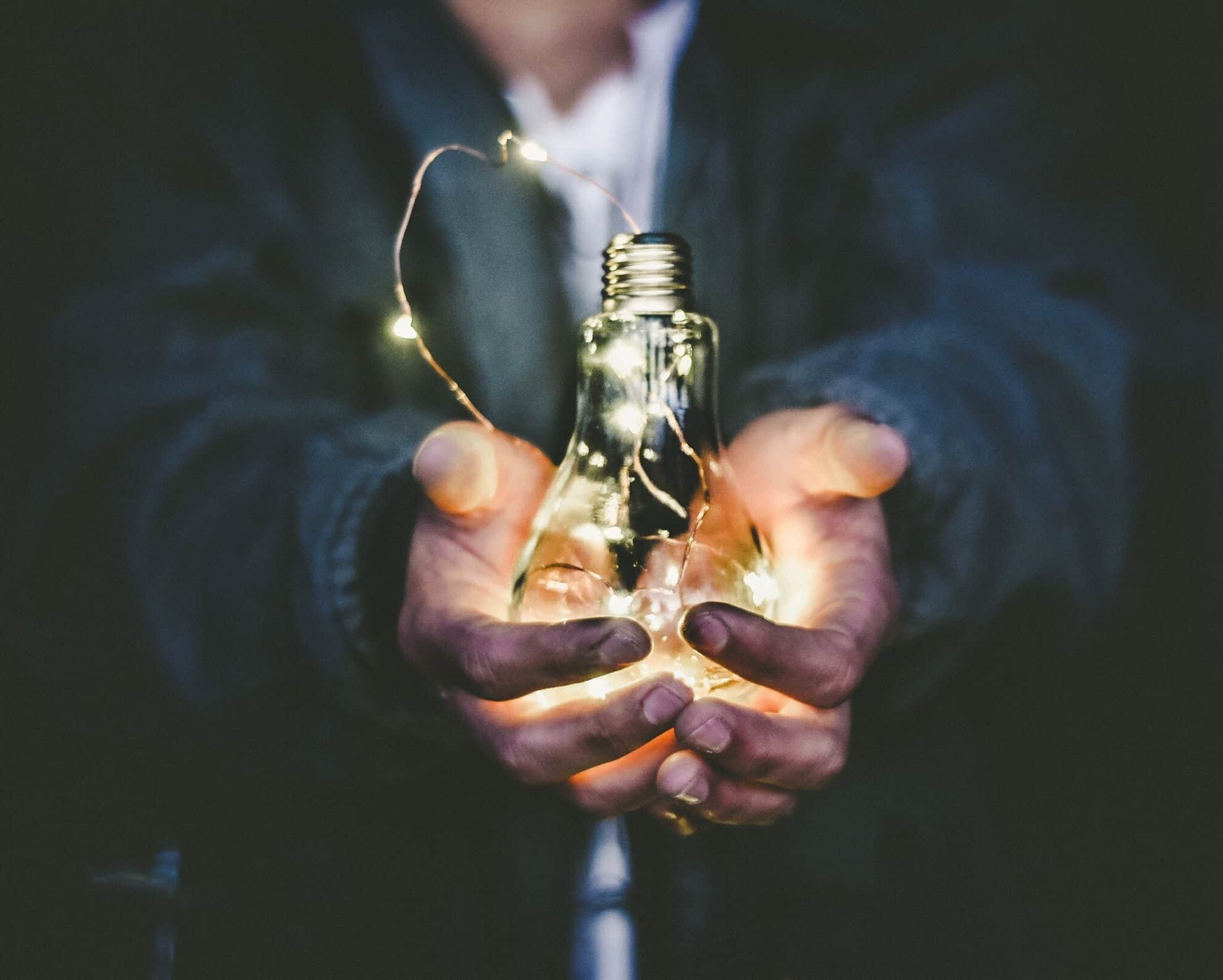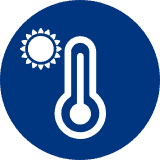5 Easy Ways to Make Your Home More Energy Efficient
![]() If I had a nickel for every time a client asked me for an easy way to make their home more energy efficient, I’d be a very rich man. The question has been asked in numerous different ways over the years, but the basic gist is the same: What can the average homeowner do to quickly lower his or her utility bills, while at the same time creating a lifestyle that helps the environment?
If I had a nickel for every time a client asked me for an easy way to make their home more energy efficient, I’d be a very rich man. The question has been asked in numerous different ways over the years, but the basic gist is the same: What can the average homeowner do to quickly lower his or her utility bills, while at the same time creating a lifestyle that helps the environment?
I love to see how much my clients care about energy efficiency, so it breaks my big ole heart that I can’t give them the simple answer they’re looking for—there is no single secret. But, the good news is, there are a variety of ways, which all work in tandem, that can easily help you make your home much more energy efficient. It really just comes down to investing in several home upgrades that will, together, maximize energy usage in your home.
Taking a whole home approach to energy efficiency is key if you want to significantly decrease that energy bill—and have a meaningful impact on the environment. So, in keeping with the big picture approach I recommend to all of my clients, I’m going to share five truly effective and easy ways to make your home more energy efficient. Together, these upgrades will have an exponentially higher impact than any would have on their own.
Effective Upgrades: 5 Easy Ways to Make Your Home More Energy Efficient
When most people think of energy efficiency, they think of unplugging the toaster when it isn’t being used or turning off the lights when you leave the room. Sure, those things are important, but when it comes to truly impacting your home’s energy efficiency, there are bigger fish to fry.
Here are the easy and effective home upgrades I always recommend to my clients looking to make a big splash in the vast ocean of modern energy efficient appliances and home improvements:
- Step #1: Upgrade to double pane windows
- Step #2: Get a professional HVAC tune-up
- Step #3: Optimize your hot water heater with regular maintenance
- Step #4: Insulate your attic against cold and heat
- Step #5: Get a plumbing inspection to seal leaky faucets and pipes
Energy Efficient Home Upgrade #1: Double Pane Windows With a Strong Seal
 Whenever I’m assessing a home for energy efficiency, one of the first things I look at is the windows. You wouldn’t believe how much old, single pane, poorly sealed windows can reduce your home’s energy efficiency. Here’s are a few ways to upgrade your windows for maximum energy efficiency:
Whenever I’m assessing a home for energy efficiency, one of the first things I look at is the windows. You wouldn’t believe how much old, single pane, poorly sealed windows can reduce your home’s energy efficiency. Here’s are a few ways to upgrade your windows for maximum energy efficiency:
- Professionally install double pane windows: Single pane windows are a huge energy drain because they provide no insulation against heat and cold. The thin pane allows outside air to flow in, affecting the temperature in your home and making your HVAC system work extra hard to regulate temperature. Upgrading to double pane windows can reduce energy costs by up to 12%.
- Seal existing or new windows against leaks: When the seal between your wall and your window has been compromised, or the windows are framed with warped wood, outside air seeps into your home, affecting the temperature. Just as with single pane windows, this puts an enormous strain on your HVAC system and drives up your energy bill. Consider installing vinyl windows to ensure a tight, long lasting seal and greater energy efficiency.
Not only will new windows make your home more energy efficient, they’ll also reduce outside noise, which is a bonus if you live somewhere with lots of noise pollution, like Sacramento or the booming suburbs of Elk Grove. Talk about a win-win situation! Just make sure to bring a professional on board to expertly install your windows for the most impact on your home’s levels of energy efficiency. Plus, local experts will tackle the permit process for you, saving you time as well as money.
Energy Efficient Home Upgrade #2: A Professional HVAC Tune-Up
 Ensuring your HVAC system is always in tip-top shape is a must for making your house more energy efficient. Since heating and cooling accounts for almost half of your home’s energy costs, it’s vital to professionally maintain it.
Ensuring your HVAC system is always in tip-top shape is a must for making your house more energy efficient. Since heating and cooling accounts for almost half of your home’s energy costs, it’s vital to professionally maintain it.
Since heating and cooling accounts for almost half of your home’s energy costs, it’s vital to professionally maintain it.
As a rule of thumb, I recommend having your HVAC serviced at least once a year. Not only will this prevent potentially costly repairs and breakdowns, it will extend the life of your unit as well.
Now, I have to stress that when it comes to DIY HVAC maintenance or repair, I don’t recommend it. Over my many years in the furnace and AC industry, I’ve found that DIY jobs are rarely successful, often causing more problems than they solve.
If money is a concern, know that HVAC maintenance doesn’t have to be expensive—especially if you join an HVAC maintenance club that gives you discounted rates and regular tune ups. And, you can also look into local financing options. Northern California homeowners have both SMUD and HERO financing available, and local HVAC professionals can help you with the paperwork and application process.
Energy Efficient Home Upgrade #3: Optimize Your Hot Water Heater
 Did you know that your hot water heater is the second biggest energy user in your home? That’s right—heating water accounts for approximately 17% of your home’s energy costs. That’s why it’s important to make sure it’s optimized for efficiency so it isn’t draining energy and inflating your power bill unnecessarily.
Did you know that your hot water heater is the second biggest energy user in your home? That’s right—heating water accounts for approximately 17% of your home’s energy costs. That’s why it’s important to make sure it’s optimized for efficiency so it isn’t draining energy and inflating your power bill unnecessarily.
- Standard hot water heaters: If you have a standard water heater, the simplest advice I can give for helping it run efficiently is to drain the tank twice a year. This will help get rid of any sediment that clogs up the piping and causes the heater to work extra hard. I would recommend calling in a professional for this job, as simple as it sounds. Your hot water heater can be a complicated business.
- Tankless hot water heaters: Alternatively, if you have a tankless water heater, I’d recommend getting a water softener. Bundling a water softener with your tankless water heater is a match made in heaven when it comes to energy efficiency. Mineral deposits from hard water clog water heater piping, forcing the heater to work extra hard to push water through. An overworked water heater is like throwing energy and money down the drain, but adding a water softener system can ease up the pressure in your tankless water heater and its pipes.
Energy Efficient Home Upgrade #4: Insulate Your Attic
 Here in Northern California, a lot of homeowners tend to think that insulation is only for keeping your home warm in the winter. Since the winter months here are mild and gone before we know it, insulation isn’t something many of us think about too often. But, it turns out that insulation has benefits in the summer as well as in the winter. It effectively prevents the conduction of heat, meaning it keeps the blazing heat of the California summers out of your home.
Here in Northern California, a lot of homeowners tend to think that insulation is only for keeping your home warm in the winter. Since the winter months here are mild and gone before we know it, insulation isn’t something many of us think about too often. But, it turns out that insulation has benefits in the summer as well as in the winter. It effectively prevents the conduction of heat, meaning it keeps the blazing heat of the California summers out of your home.
I don’t often recommend replacing all of the insulation in a home, especially if it’s fiberglass, but one thing I always recommend is insulating your attic; it can reduce your energy expenditure by up to 20-60%.
I don’t often recommend replacing all of the insulation in a home, especially if it’s fiberglass, but one thing I always recommend is insulating your attic; it can reduce your energy expenditure by up to 20-60%. Wowzers!
During the summer months, your attic can heat up your home like you wouldn’t believe, making your HVAC work hard to keep things cool, especially if your HVAC is located in your uninsulated attic. You’re losing energy—year round—if your home isn’t insulated, but an insulation installation expert can nip that energy leak in the bud. Say that five times fast.
Energy Efficient Home Upgrade #5: Patch Up Your Plumbing Leaks
 No home can be truly energy efficient without a professional plumbing inspection to help catch and patch leaks. A single water faucet leak alone can cost you up to $35 and waste over 1,500 gallons of water each year.
No home can be truly energy efficient without a professional plumbing inspection to help catch and patch leaks. A single water faucet leak alone can cost you up to $35 and waste over 1,500 gallons of water each year.
I recommend having a plumber out to your home to assess for any leaks in your pipes, faucets, and plumbing system. Not only will they address any obvious drips, they can also perform a video assessment that allows them to see inside the hidden areas of your system to identify sneakily leaky pipes.
Once the leaks have been located and patched, I also recommend having your plumber install low flow fixtures on your shower and faucets to reduce your hot water usage and cut energy costs. Quality low flow fixtures rated at less than 1.0 gpm, and showerheads rated at less than 2.5 gpm, can offer you between 20-60% in water savings.
The Benefits of Making Easy Energy Efficient Home Upgrades
The best part about upgrading your home based on a whole house approach to make it more energy efficient—other than saving money and helping the environment, of course—is that you can apply for rebates. Depending on your selected upgrades, you could qualify for as much as $9,000 back. If that isn’t incentive enough to think seriously about upgrading your home and making it more energy efficient, I don’t know what is!
Honestly, even though I get asked a lot, I don’t think I’ll ever get tired of answering homeowners questions about how to make their homes more energy efficient. It feels really good to offer up solutions that not only help my neighbors save money but that also have a positive impact on the environment as well. I’d take that over being a rich man with a bunch of nickels any day.
At Bell Brothers, we believe in taking a whole home approach to energy efficiency. When everything works together, from your windows to your HVAC, your insulation to your plumbing, your home will knock it out of the park when it comes to efficiency, just like the Sacramento River Cats at Raley Field. To set up a free in-home consultation and assessment, contact us today.
Wondering how to finance a new HVAC system, windows, or plumbing? HERO is a unique financing option that helps California homeowners afford energy efficient upgrades to their home. Contact Bell Brothers, a HERO approved contractor, to learn more. Our local HVAC, plumbing, and window specialists will walk you through the entire process, from applications to installation.
Image courtesy Unsplash user Riccardo Annendale

